Imagine a local salon with delighted customers expanding to three more locations. Can they still keep all customers happy without a plan? As the business scales and goes digital to reach more people, it needs a well-defined customer experience strategy to ensure customer satisfaction levels don’t drop.
When you see just a few customers daily, it is easy to provide attention, personalize interactions, and deliver a good customer experience.
And providing good customer experience pays off too. A recent Birdeye study shows that 77% customers share a positive customer experience with family and friends, while 74% return to buy again from the business.
But, customers have high expectations and expect the same consistently good service from a local business as they would get from a big brand.
While achieving that level of consistency in customer experience can seem daunting, with a robust framework, your business can aim to deliver customer delight every day.
In this blog post, we explore the essence of a customer experience strategy to help local businesses serve their customers well and delight across every interaction.
Table of contents
- What is customer experience (CX) strategy?
- What are the pillars of customer experience strategy?
- How do you develop a customer experience strategy? Best practices to follow
- Challenges in building a customer experience strategy
- How Hillcrest Animal Hospital improved experience
- Customer Experience Management Software
- Frequently asked questions about customer experience strategy
- Start delighting your customers with Birdeye
What is customer experience (CX) strategy?
A customer experience strategy is a framework that consists of actionable plans, measures, and strategies to address all customer experience touchpoints of a business. It helps businesses deliver a positive and meaningful experience to customers across all interactions as a whole.
What are the components of customer experience strategy?
Customer experience strategy has four major components that help business succeed, and they are:
- Vision
- Customer personas
- Customer experience differentiators
- Customer experience metrics
Let us explore these components in detail:
Vision
Make sure that your customer experience strategy fits in with your business’s overall vision. For example, if you’re a realtor looking to sell clients the homes of their dreams, think about the ways you can tailor your strategy to better accomplish this goal.
Customer personas
No business is going to satisfy everyone. In order to deliver a great customer experience to your base, write down some characteristics of your target customers. What demographic group are they in? How much money do they make?
Customer experience differentiators
What sets your business apart from the competition? Think about your business’s key differentiators. Are you a retailer that goes above and beyond in delivering great customer service? Explore ways that you can base your strategy around your competitive advantage.
Customer experience metrics
You can’t manage what you can’t measure. Think about the metrics that you can use to best measure customer satisfaction and understand your overall customer experience. This helps you see whether you are making progress toward your goals or not.
What are the pillars of customer experience strategy?
Here are five areas that you can focus on to build a great customer experience strategy:
Easy to find
Remember, the customer journey starts from the moment of first discovery. Studies show that 61% of customers only choose to interact with the top three businesses they see in a Google search. So make sure that your business is easy to find on Google search.
A customer also needs to be able to both find your business and understand how your services align with their desires.
If a customer is looking for an “Italian restaurant,” it’s important that you both claim your listings across the Internet to make sure that they can find your business. It’s also important to collect reviews, so they can see social proof that you’re providing quality services.
Pro Tip: According to Google Diamond expert Ben Fisher, service category and reviews on Google Business Profile are two of the four critical ranking factors on Google local search. Businesses can become easy to find and reach a higher volume of customers by focusing on these factors. Know more about growing on Google with our insightful Birdeye View session.
Easy to reach
After the customer does some digging, chances are that they’ll find a couple of businesses that fit their needs. So how do you stand out and become the business they decide to go with?
The businesses that win are the businesses that offer easy options to get in touch. Studies show that 30% of business phone calls go unanswered, and customers truly prefer a business that is easily accessible.
Make sure that your team is monitoring channels like livechat, text messaging, and Facebook Messenger. That way, you can get in contact with all of the prospects trying to reach your business.
Related read: A guide to omnichannel customer experience management
Convenience
Next, make sure that your business is offering convenience throughout the entire experience. In today’s digital era, customers have grown accustomed to seamless experiences and don’t want to deal with unnecessary frustrations.
Keep an eye on customer feedback so you can see if there are any obstacles that are making your customer journey too hard to complete. Removing these obstacles can make your overall customer experience far smoother.
Personalization
Personalization can help you build a stronger emotional connection with your customers. In fact, a Birdeye study found that over 36% of marketers use personalized SMS to reach their customers.
In order to personalize customer experiences, it’s important to keep a record of previous customer interactions. For example, if you’re a dental practice and one of your patients is due for an appointment, you can send a message that says something like this:
“Hey (Customer name), looks like you’re due for an appointment. Would you like to schedule something for next Saturday?”
Omnichannel flexibility
A data silo can ruin your brand in the eyes of the customers. Many businesses have different teams handling different channels. The employees who greet your customers when they come for an in-person visit may not be the same employees who handle your Facebook Messenger. In turn, those employees might not be the same employees who handle your phone lines.
While these are all different teams, customers will see each interaction they have with a business as taking place with one brand. They expect that they’ll have the same great experience no matter how they come into contact with you. That’s why it’s important to adopt an omnichannel customer experience approach and make sure your team is staying on top of messages, no matter where they came from.
Develop a strong customer experience strategy with Birdeye
Level up customer experience with Birdeye.
How do you develop a customer experience strategy? Best practices to follow
Here are a few things you should consider when you’re building a customer experience strategy template:
- Write a customer experience intent statement
- Leverage customer data
- Use competitive insights
- Invest in collaboration tools
Customer experience intent statement
If you’re just getting started with a customer experience strategy, consider writing a customer experience intent statement. This is a paragraph or two that conveys the experience that your business is looking to provide to customers.
Remember:
- A customer experience intent statement is not the same as a mission statement. While a mission statement talks about your high-level goals, a customer experience intent statement tells you how you aim to provide a fantastic experience across the entire customer journey.
- While your customer experience intent statement should be realistic and practical, try to aim high. Instead of simply trying to satisfy your customers, make sure that they’re delighted. Remember, the ultimate goal is to turn your customers into loyal advocates.
Here’s an example of a customer experience intent statement.
Every time we interact with customers, we respond as promptly as possible and make sure that the conversation is not over until the question the customer has is resolved. That requires both listening to the customer and collaborating with fellow employees. We collect feedback from customers, both satisfied and dissatisfied, to better understand how we can exceed the expectations of our customer base.
Leverage Customer Data
In order to build a great customer experience, it’s important to collect data on how your customers feel about every touchpoint of the customer journey. You can leverage this data in order to identify possible areas of improvement and build on areas where you’re already excelling.
Competitive Insights
To be sure that you’re providing the best customer experience in the area, it’s important to keep a close eye on what your competitors are doing. If there’s an area where they’re outperforming you, you need to know what you can do in order to improve.
Related read: Competitor analysis secrets with free template
Invest in collaboration tools
In order for your employees to be able to effectively serve all of your customers and prospects, they need to be able to work strongly as a team. Invest in tools that will help them collect feedback and stay on top of every contact channel.
Challenges in building a customer experience strategy
Of course, not every business can build a great customer experience strategy. There are a few challenges that businesses need to overcome. Some of the common challenges in building a customer experience strategy are:
Access to information
In order to build a successful customer experience strategy, it’s necessary to have data about what’s working and what’s not. Unfortunately, businesses often don’t have information from customers that they need to improve customer experience.
Data silos
Often, a customer experience strategy is hurt when data silos take place in different departments. In order for a customer experience strategy to be successful, it needs to be omnichannel. Having a shared inbox where everything is in one place can prove super useful in breaking down data silos.
Lackluster technology
The customer experience landscape is shifting quickly. While it may have been okay ten years ago to not monitor text messages and Facebook messages, that is definitely not the case anymore. In order to provide a great customer experience, businesses need to make sure that they’re keeping up with technological changes.
What is customer experience mapping?
Customer experience mapping is the process of understanding every interaction across various touch points in a customer journey. This helps businesses get an overview of customer interactions with the business to identify problem areas and make improvements.
Customer experience mapping is the first step in developing a customer experience strategy (or customer experience framework).
After all, you can’t improve the customer experience process until you understand the customer journey from start to finish.
So how can you build a customer experience map? The first step is collecting data on your customers. Make sure that you understand their feelings throughout the process.
Here are four ways you can start mapping your customer experience:
- Customer interaction analysis
- Online review monitoring
- Surveys
- Competitor insights
Customer interaction analysis
Every customer interaction is a form of feedback. Businesses must begin customer experience mapping by analyzing customer interactions across SMS, social media messaging, emails, and other channels.
Businesses can understand typical customer journeys, discovery platforms, frequently asked questions, customer expectations from the brand, and so much more from customer conversation analysis.
You can also use AI-driven messaging tools like Birdeye that help you build FAQs from web chat conversations, find repeated keywords, summarize conversations to understand sentiment, and more.
Online review monitoring
By monitoring online reviews, you can keep track of what your customers are saying across the Internet. Keep a close eye on your overall star rating, as it can be an accurate gauge of overall customer opinion.
It’s also important to pay attention to review text. This can give you a great idea about what customers are complaining about and praising in your current customer experience.
While big sites like Google and Facebook are where most customers go, it’s important to pay attention to review sites within your specific niche.
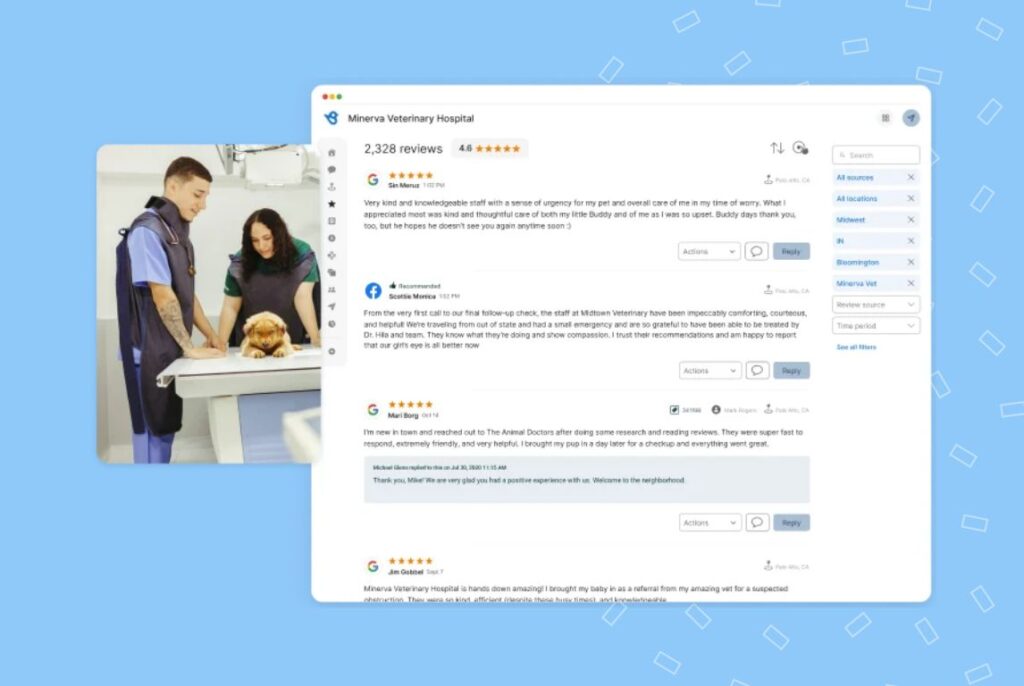
Surveys
Of course, online reviews aren’t the only type of customer feedback that you can collect. When you send a customer survey, you can get feedback on specific areas of the customer journey. A real estate agent can send client surveys after major milestones in order to get a better idea of how the customer feels throughout the sales process.
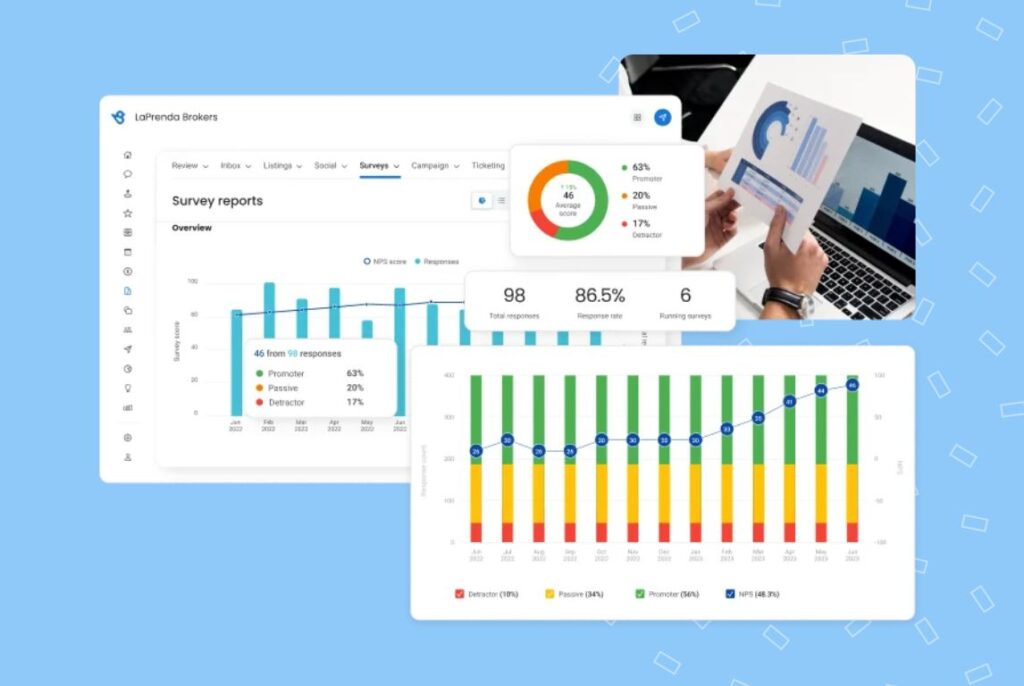
One survey you should consider sending is a net promoter score (NPS) survey. Net promoter score is an easy way for you to find out how your customers feel about your business. It works like this: your customers are asked to select how they feel about your business on a scale of 0-10.
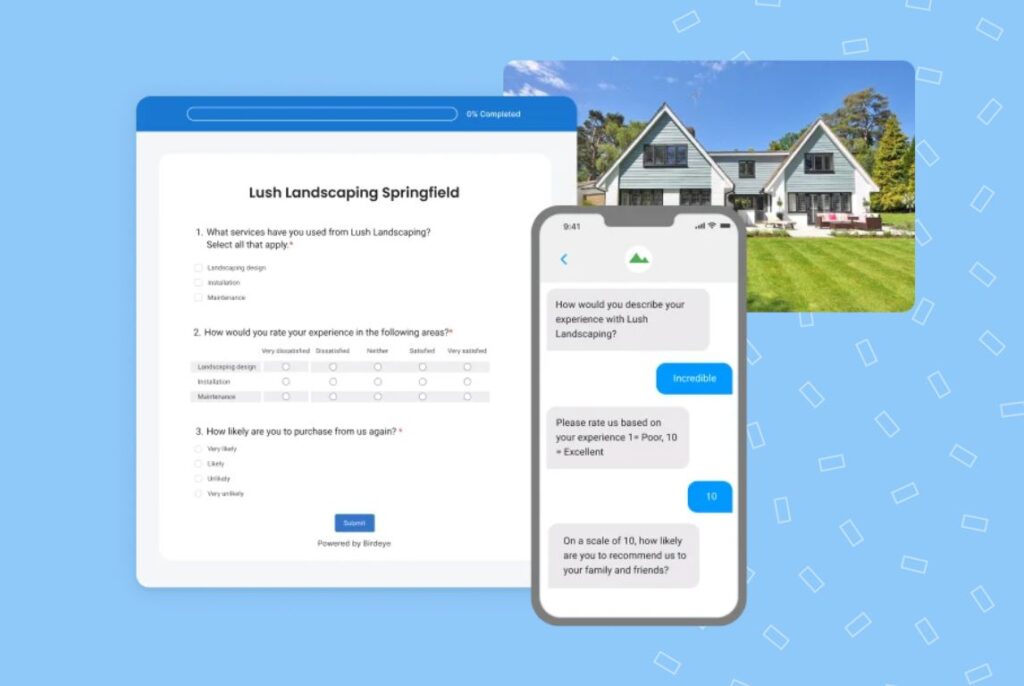
Collecting competitive insights
But remember, it’s also important to start collecting data on your competitors. Obviously, it’s a little bit harder to do this. After all, it’s not easy to survey your competitors’ customers the same way you can survey your own.
Luckily, there is an easier way. Keep an eye out for your competitors’ online reviews. Remember, reviews are authentic feedback from customers. By looking at your competitors’ reviews for competitive analysis and benchmarking, you should be able to understand their customer experience.
If one of your competitors has a higher overall star rating than you, keep an eye out and see the areas where customers are praising them. If a competitor is consistently getting praised because of “short wait times,” it might be a good idea to explore options to cut down on your own wait time.
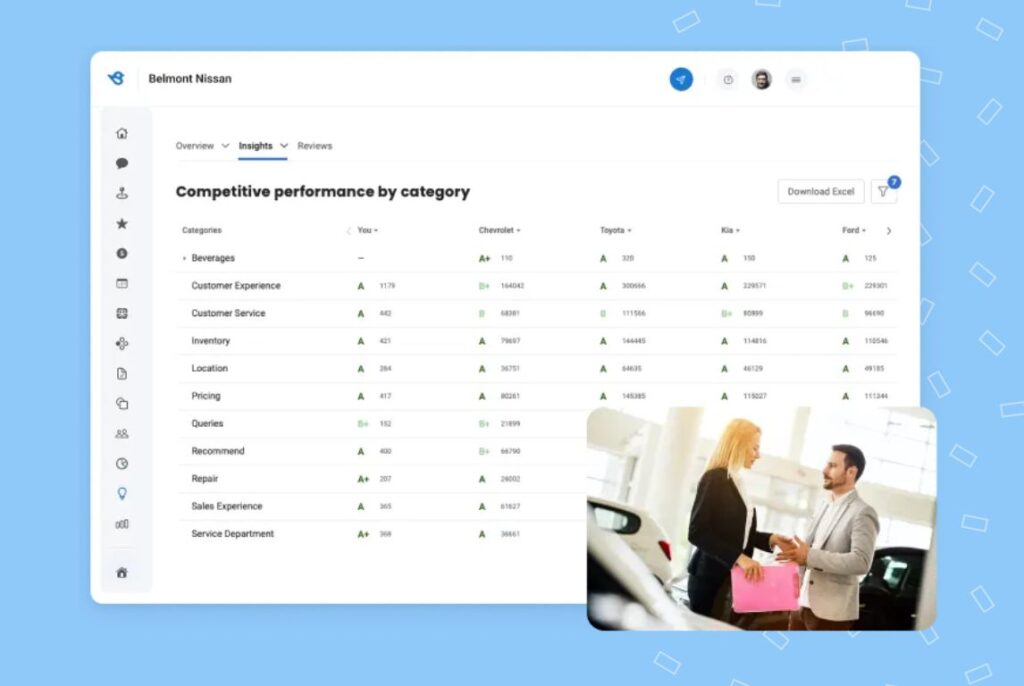
How Hillcrest Animal Hospital improved experience
Let’s talk about a real-life customer experience example: Hillcrest Animal Hospital. The veterinarian practice started with Birdeye to help improve the overall experience for both pets and owners.
Hillcrest Animal Hospital used Birdeye to contact pet owners on their preferred channel: text messaging. Birdeye’s all-in-one Experience Marketing platform made it easy to manage and respond to incoming messages from customers.
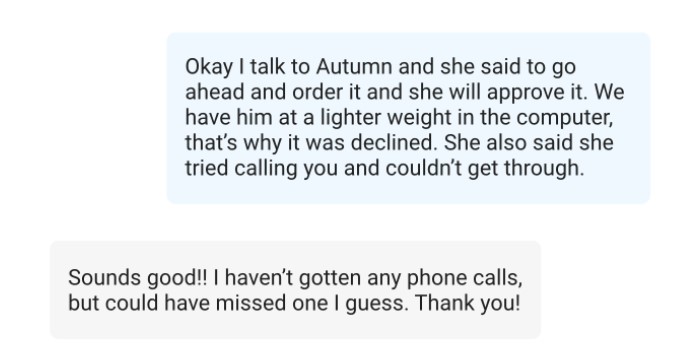
Birdeye also allowed Hillcrest to stay on top of incoming reviews. The practice was able to respond to negative reviews from pet owners and resolve the issues before they turned into bigger problems.
In addition, Hillcrest Animal Hospital sends surveys to get detailed feedback on different touchpoints and understand possible areas for improvement. All this work has paid off. Since getting started with Birdeye, the practice has seen a steady improvement in net promoter score.
Customer Experience Management Software
Birdeye’s all-in-one customer experience management platform can help your business improve its overall experience. With Birdeye, you’ll have all the data you need to start improving customer experience from day one. Here’s how you can manage customer experience with Birdeye.
Monitor your Online Reviews
Remember: online reviews provide you with valuable customer feedback. Customers give you valuable feedback about what they liked and didn’t like about their experience. The only problem is that there are hundreds of review sites across the Internet.
With Birdeye Reviews, you can view reviews from over 200+ sites in a single dashboard. You don’t have to switch between dozens of review sites to find out what your customers are saying. It’s feedback from all over the Internet in one place.
Interact with customers
It’s tough to stay on top of all the different channels where customers might message you: website chat, text messaging, and livechat. It’s just too easy for a message to slip through the cracks. With Birdeye Messaging, it’s easier for your whole team to stay on top of every customer message. Birdeye allows you to view and respond to all your messages in one place, without having to flip between different channels.
Birdeye also enables businesses to assign messages to team members. Tools like internal notes make it easy for team members to collaborate and make sure every customer query is handled promptly.
Easily send customer surveys
You don’t have to struggle to get accurate customer data. Birdeye allows you to send surveys. You’ll be able to analyze the results within the Birdeye dashboard.
Worried that your customers don’t want to take long surveys? With Birdeye’s customer experience template, all customers have to do is pick between three options: happy, sad, and neutral.
Birdeye’s surveys are award-winning and fully customizable. Whether you want to send a simple survey or a complex one, Birdeye has got you covered.
Insights with natural language processing
Remember, an overall star rating isn’t the only data from reviews that matter. There’s also the unstructured that you get from review text.
Of course, it can be hard to get any sort of insights from mountains of review text. It can be hard to tell where the legitimate issues are or whether a reviewer is just a constant complainer. Natural Language Processing gives you the information you need to cut through the noise. Birdeye’s NLP engine Athena gives you the Insights that you need to understand what categories are being talked about the most.
Athena doesn’t just collect data on your reviews. Athena lets you know how well you’re doing in comparison with your competitors. Make sure that you never fall behind in a single category with Birdeye.
Frequently asked questions about customer experience strategy
Customer experience matters for a very simple reason: loyal customers not only value your services, but they’ll also bring in friends and family. The better your customer experience, the better chance you have of getting loyal customers.
You can create a CX strategy by analyzing existing customer experience, collecting customer feedback, understanding industry standards, and devising a framework that defines each customer interaction. The key is to aim for customer delight at every stage of the journey.
Start delighting your customers with Birdeye
With Birdeye, you’ll have all the information you need to start building fantastic customer experiences and grow your revenue. More than 150,000 businesses use Birdeye to engage closely with customers and get the feedback they need to start driving revenue.

Originally published









